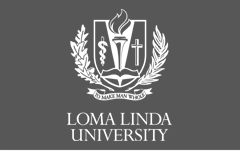Article Title
Sarcina ventriculi: A case series with a new emphasis on an old bug
Abstract
Sarcina ventriculi is an anaerobic, gram-positive coccus that thrives in acidic environments, and has been increasingly found in the upper gastrointestinal tract. S. ventriculi infection has been associated with delayed gastric emptying, gastric ulcers, emphysematous gastritis, and peritonitis. Despite first being characterized in 1842, recent reports of human S. ventriculi infection have started to appear in the literature only within the last 10 years. Patient #1 is a 58-year-old male with a history of T1bN0M0 moderately-differentiated esophageal adenocarcinoma, status post Ivor-Lewis esophagectomy in March 2016. Routine follow-up esophagogastroduodenoscopy (EGD) eight months following his esophagectomy showed an area of suspicious erythema in his neoesophagus and retained food material at the anastomosis. Biopsies taken from the neoesophagus showed moderate acute esophagitis, chronic submucosal inflammation and gram-positive cocci in tetrad groups, suggestive of S. ventriculi infection. Patient received no antibiotic treatment and has continued to be asymptomatic for upper gastrointestinal symptoms since. Patient #2 is a 9-year-old male with a history of severe eosinophilic esophagitis and pyloric stenosis. On EGD, his esophagus demonstrated white patches and pus with sloughing of the mucosa, and a large gastric ulceration immediately distal to the antrum. Biopsies takes from the stomach and esophagus showed mild chronic inflammation and rare Sarcina organisms. He was treated with ciprofloxacin 20 mg/Kg/ dose twice per day and metronidazole 250 mg three times per day for 10 days. On repeat EGD in June 2018, his esophagus showed esophageal and gastric erythema, a small gastric ulcer which had improved since previous EGD, and a narrow-appearing pylorus. Gastric and esophageal biopsies showed no S. ventriculi organisms. Patient #3 is a 65-year-old female with a history of stroke and gastrointestinal reflux disease who presented to her gastroenterologist with chronic acid reflux and diarrhea. An EGD showed no suggestion of esophagitis, significant solid food retention in the stomach, mild antral gastritis, and a normal-appearing duodenum. Random biopsies from the duodenum and stomach both showed rare superficial Sarcina organisms in a background of mild chronic gastritis. The patient was not prescribed antibiotic treatment and has continued to be asymptomatic for upper gastrointestinal symptoms since. Human infection by S. ventriculi is rare and not well characterized. Although S. ventriculi has been associated with upper gastrointestinal tract infection, this case series reports the first case of S. ventriculi infection in a patient diagnosed with eosinophilic esophagitis. Despite increased awareness and diagnosis of this bacterial species, further studies are warranted to elucidate the clinical significance, optimum treatment regimen, and prognosis of S. ventriculi infection.
Recommended Citation
Propst, Robert; Denham, Laura; Deisch, Jeremy; and Magaki, Shino
(2017)
"Sarcina ventriculi: A case series with a new emphasis on an old bug,"
Loma Linda University Student Journal: Vol. 2
:
Iss.
1
, Article 15.
Available at:
https://scholarsrepository.llu.edu/llu-student-journal/vol2/iss1/15
Publication of APC Abstracts & Posters
1

